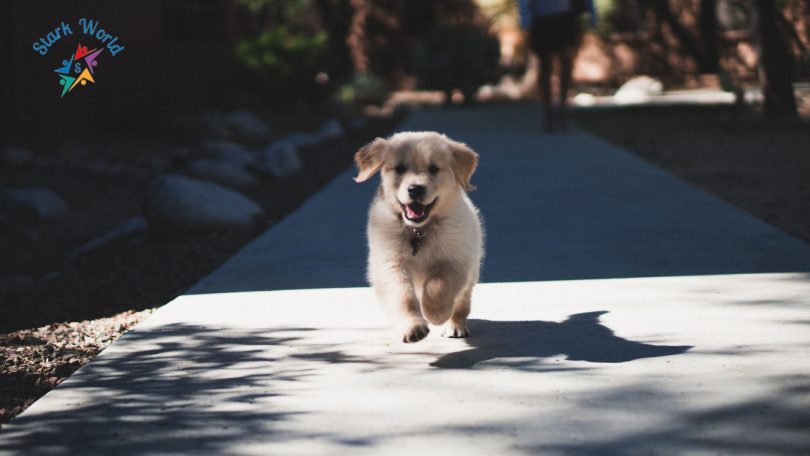Introduction
Training your puppy can be a daunting task, but it is also a very important part of puppy ownership. Setting up a good foundation of training and socialization is essential to ensuring a healthy and happy relationship between you and your four-legged companion.
Training your puppy does not have to be a stressful process, however. This comprehensive guide will provide you with the necessary tools and information to ensure that training your puppy is both effective and enjoyable. By following the steps outlined in this guide, you will be well-equipped to properly train your new puppy and create a strong bond with them.
One of the most important aspects of puppy training is establishing realistic expectations. It is essential to remember that puppies can be easily distracted and do not have the same level of impulse control as an adult dog. Therefore, training is best done in short, positive bursts, and it may take time and patience before your puppy can properly respond to basic commands.
It is also important to create a positive environment for your puppy to learn in. Puppies respond best when they are rewarded for behaving correctly and have a safe, comfortable space to learn in. Additionally, by providing your puppy with the right tools, such as treats, toys, and appropriate training collars and harnesses, you can ensure that your puppy is ready to learn.
Remember, training is an ongoing process, and puppies will keep learning throughout their lives. Consistency is key to ensuring steady progress. This guide offers all the essential information to give your puppy a strong start.
By following this comprehensive guide, you will be well-equipped to properly train your new puppy. It is important to remember that puppies respond best when they are rewarded for behaving correctly and provided with a safe, comfortable environment to learn in.
Additionally, it is essential to remain consistent and patient throughout the training process. This guide will provide you with the necessary tools and information to ensure that training your puppy is both effective and enjoyable.
Preparing for Puppy Training
Getting a puppy is an exciting and rewarding experience, but it also requires a lot of preparation. A well-trained puppy is a happy puppy, so it’s important to spend some time preparing for puppy training. Here are some tips for preparing for the puppy training journey:
Choosing the Appropriate Training Tools
When it comes to puppy training, having the right tools is essential. Many people opt for rewards-based training, which involves using positive reinforcement to reward desired behaviors. This type of training requires treats, toys, and other incentives to motivate your puppy. Other tools, such as harnesses, collars, and leashes, can also help maintain control over your puppy during training sessions.
Designing a Positive Training Environment
A positive training environment is key for a successful puppy training experience. Make sure your puppy has plenty of room to move and explore during training. Remove any distractions and provide enough space for your puppy to focus on the commands you are teaching him or her.
Establishing Realistic Goals
It’s important to set realistic goals for yourself and your puppy. Each puppy is different and learns at a different pace, so don’t expect too much too quickly. Be patient and understand that your puppy may need more time to learn certain commands. Establish a timeline for basic obedience training and potty training, and make sure to provide plenty of rewards for successes along the way.
Overall, puppy training requires a lot of patience and understanding. Make sure to set realistic expectations for yourself and your puppy and provide plenty of positive reinforcement to ensure a successful training experience. With the right tools, environment, and goals, you can start training your puppy in no time.
Basic Obedience Training
There is no better way to start your puppy’s training journey than by by teaching them basic obedience commands. Obedience training is an important part of any puppy’s learning process and will provide them with the tools they need to become well-mannered, obedient, and responsible members of the family.
When starting, it is important to focus on teaching just a few commands at a time. Pick commands like “sit”, “stay”, and “come” and use them consistently throughout the training process. Be sure to use the same word each time, and always provide praise and rewards when the puppy follows your commands.
Establishing a reward system is also essential for developing an obedient puppy. Every time your puppy follows a command, give them a treat or verbal praise to reward them for their good behavior. This will help to reinforce the behavior and will encourage your puppy to repeat it in the future.
Maintaining consistency is crucial in obedience training. Each time you issue a command, it’s essential to follow through with your expectations. If your puppy doesn’t initially respond to the command, offer a gentle reminder, and then reward them when they comply.
Finally, it is important to remember to keep the training sessions short and fun. Puppies learn best when they are having fun, so make sure to keep the session upbeat. Praise your puppy often, and use rewards to motivate them to stay engaged.
By following these tips and providing consistent, positive reinforcement, you will be able to successfully teach your puppy basic obedience commands and set them up for a lifetime of success. With a little patience and dedication, your puppy will quickly learn the importance of following commands and will become a well-mannered, obedient member of the family.
Potty Training Basics
The process of potty training your puppy can be daunting, but you must take the time and effort to properly potty train your puppy to ensure it is a well-mannered and house-trained companion. There are a few steps you can take to ensure your puppy is prepared for the process of potty training.
First, you should create a regular potty schedule for your puppy and stick to it. This will help your puppy gain an understanding of when it is appropriate to eliminate. You should take your puppy outside to eliminate at the same times every day and use verbal commands such as “go potty” when you take them outside. Additionally, you should reward your puppy when they do eliminate outside.
If your puppy has an accident in the house, you mustn’t punish them. This can be counterproductive and make the process take longer. Instead, you should take your puppy outside to eliminate it and use a firm “no” or stern look when inside accidents occur. Additionally, you should clean up any messes with an enzymatic cleaner to remove any odors that could attract your puppy back to the same area.
It is important to understand that potty training your puppy is a process that will take some time. You should be patient and understanding with your puppy during this process. Be sure to praise your puppy when they do the right thing and be consistent with your expectations. This will help your puppy understand the desired behavior and the rules of the house.
Your puppy may also benefit from confinement or crate training. This will help teach your puppy that there are certain areas of the house or certain times of day that are meant for sleeping or resting. This can help teach your puppy to hold their bladder or bowel movements and to use the bathroom outside instead of inside.
Finally, you should be sure to provide plenty of opportunities for your puppy to eliminate. Take your puppy out at least every two hours and monitor their behavior for signs that they need to go. This will also give your puppy a chance to get some fresh air and exercise, which is important to their overall health and well-being.
Potty training your puppy can present challenges, yet it’s a rewarding journey. By embracing patience, consistency, and the power of positive reinforcement, you can guide your puppy in mastering household rules and transforming them into a well-behaved, house-trained companion.
Crate Training
Crate training is one of the most effective methods for helping your puppy adjust to its new home. It provides a safe space your puppy can call its own and helps with house training. It also helps to reduce separation anxiety and protects your home from damage.
When introducing your puppy to its crate, make sure to do so in a positive and relaxed manner. You can start by having your puppy investigate the crate on its own. Then you can start feeding your puppy inside the crate or rewarding it with treats for entering the crate.
Once your puppy is comfortable entering and exiting the crate, you can begin using the crate during training. Start by having your puppy enter the crate on command. You can do this by placing treats inside the crate and rewarding your puppy for entering.
Once your puppy is comfortable entering the crate on its own, you can begin creating it for short periods of time. Start with just a few minutes and slowly increase the duration. If your puppy begins to panic, take a break and start over again.
You can also create your own puppy to help with potty training. When it’s time for a potty break, take your puppy outside and reward it for going to the right spot. Then, once it’s done, have your puppy go to its crate and reward it with a treat for staying in its crate until you come back.
Make sure to provide plenty of exercise and playtime before crating your puppy. This will help reduce boredom and encourage your puppy to rest while in the crate. You can also provide your puppy with toys and treats while it is being created to help alleviate boredom.
Finally, make sure to never use the crate as punishment. Crating your puppy should always be a positive experience. If you have to leave your puppy for a long period of time, make sure to give it plenty of exercise and playtime before creating it.
Crate training is a great way to ensure that your puppy is comfortable in its new home. By introducing your puppy to its crate in a positive and relaxed manner and providing plenty of exercise and playtime, you can ensure that your puppy has a safe and comfortable environment to call its own.
Addressing Unwanted Behavior
When it comes to puppy training, it’s important to recognize that puppies don’t come pre-programmed with all the behavior we expect from them. Like humans, puppies learn through experience. As such, they may exhibit behaviors that are undesirable to their owners, such as barking, jumping, and chewing. To correct these behaviors, owners must be willing to invest time and energy to properly address them.
First and foremost, it’s important to identify the unwanted behaviors exhibited by the puppy. For example, if the puppy is barking excessively, owners should take note of when and why the puppy is barking, as well as any triggers that may be associated with the barking. This type of analysis can help owners identify the cause of the behavior, making it easier to find an effective solution.
Once the behavior has been identified, owners should look for strategies to effectively correct the behavior. Positive reinforcement is one of the most effective methods of correcting unwanted behaviors. Owners can reward the puppy with treats or verbal praise for exhibiting desirable behaviors while ignoring undesired behaviors. Additionally, owners should be consistent in their responses to unwanted behaviors, as this will help the puppy better understand which behaviors are acceptable and which are not.
In addition to positive reinforcement, owners should also establish limits and boundaries for their puppy. Puppies need to understand that certain behaviors, such as jumping and biting, are not acceptable. Owners can use verbal commands to communicate these boundaries and should be consistent in their enforcement. Establishing clear expectations is essential when it comes to puppy training, as it will help ensure that the puppy’s behavior remains under control.
It’s also important for owners to understand the consequences of their puppy’s behavior. For example, if the puppy is exhibiting destructive or aggressive behaviors, it’s important to recognize that these behaviors may lead to serious consequences, such as injury or property damage. Taking the time to understand the consequences of the puppy’s behavior can help owners better understand how to address it.
When it comes to addressing unwanted behaviors, it’s important to remember that consistency and patience are key. Owners should remain patient and consistent when training their puppy, as it will help the puppy better understand what is expected of them. With the right approach, owners can help their puppy learn acceptable behaviors and eventually develop into a well-behaved and obedient pet.
Socialization and Exercise
Puppy socialization is one of the most important aspects of puppy training. Socialization is the process of exposing your puppy to new people, places, and environments, helping them to become comfortable in all types of situations. This is important for helping your puppy to remain calm and confident and to avoid any behavior problems later in life.
When introducing your puppy to new people, it’s important to make sure you’re doing it positively. Invite friends over to your house while your pup is present, and hand-feed them treats. This will help your puppy associate people with positive experiences.
It’s also important to take them out in public and introduce them to different environments. This will help them become comfortable in a variety of circumstances.
Exercise is another important factor in keeping your puppy healthy and happy. Not only does it help to build muscle and bone strength, but it also helps to reduce stress and anxiety.
It’s important to provide your pup with ample exercise every day, and there are plenty of activities you can do to keep them entertained. Going for walks, playing fetch, and doing agility exercises are all great activities for keeping your pup mentally and physically stimulated.
When exercising with your pup, it’s important to keep a few things in mind. Start with short periods of activity and gradually increase the intensity and duration. You want to make sure your pup is getting enough exercise, but not too much. Also, remember to provide plenty of water and rest breaks. This will help keep your pup from becoming exhausted.
Finally, it’s importantknow to understand the importance of routine. Establishing a regular exercise routine will help your pup to know what to expect and can help keep them from becoming stressed or anxious. Make sure to take your pup out for regular walks, and give them plenty of time to play and explore.
Socialization and exercise are two of the most important aspects of puppy training. Introducing your pup to new people and environments, and providing them with ample exercise every day will help to keep them healthy and happy. With the right amount of socialization and exercise, your pup can learn to become a calm, confident, and well-behaved member of the family.
Conclusion
Training your puppy is one of the most important tasks you must undertake as a pet owner. Training sets the foundation for a successful and lasting relationship between you and your pup. This comprehensive guide has provided you with all the information you need to begin your puppy’s training journey.
By creating a positive training environment, establishing realistic goals, providing rewards, setting up a crate training routine, and providing ample exercise, you can ensure that your puppy will grow up to be an obedient and well-mannered dog. Proper socialization is also a key component of puppy training. You must expose your puppy to different people, animals, and environments to ensure they are comfortable and confident in the world around them.
It is important to remember that training your puppy is a process. It will take patience, dedication, and consistency on your part for your pup to develop good habits and behaviors. While progress may not always be smooth, these tips and strategies will help you stay motivated and on track with your puppy’s training.
By following this comprehensive guide, you will be able to confidently and effectively train your puppy. Training your pup will strengthen the bond between the two of you, as well as ensure your puppy’s safety and well-being. With time and practice, you and your pup will be on your way to having a wonderful, lifelong relationship.







